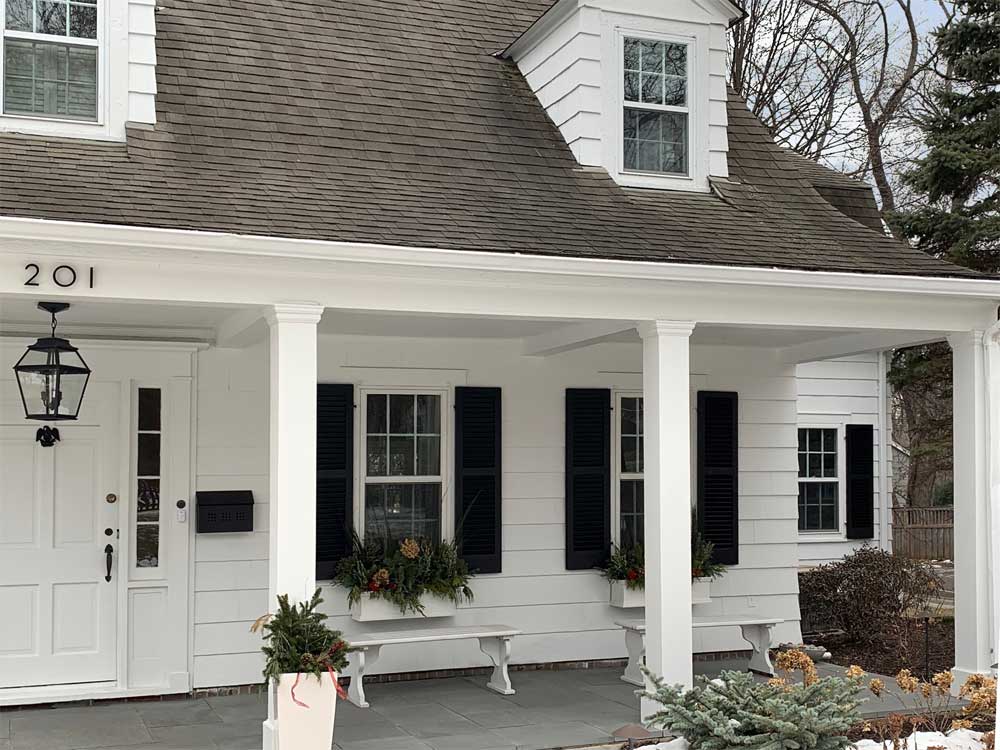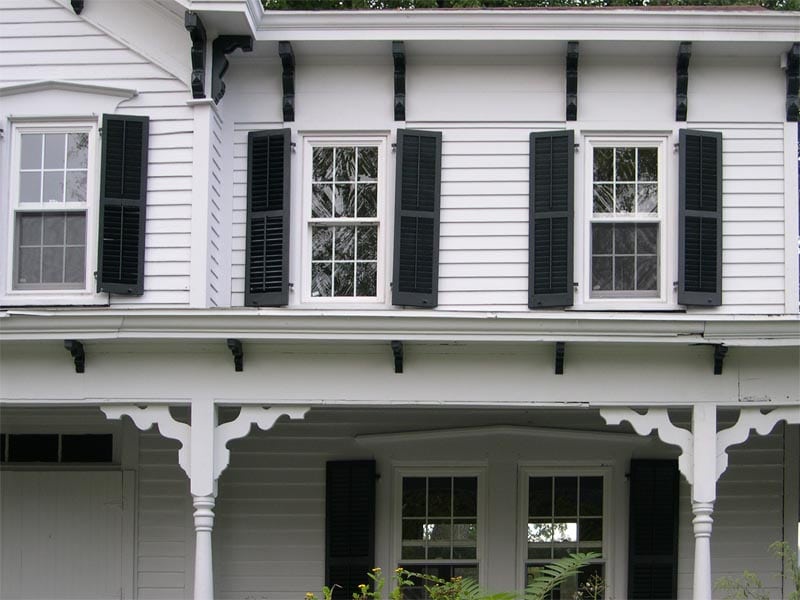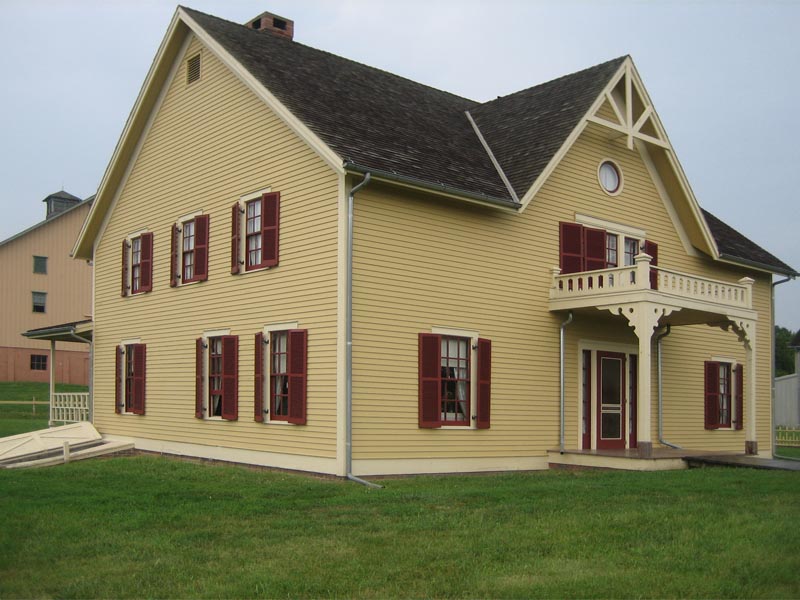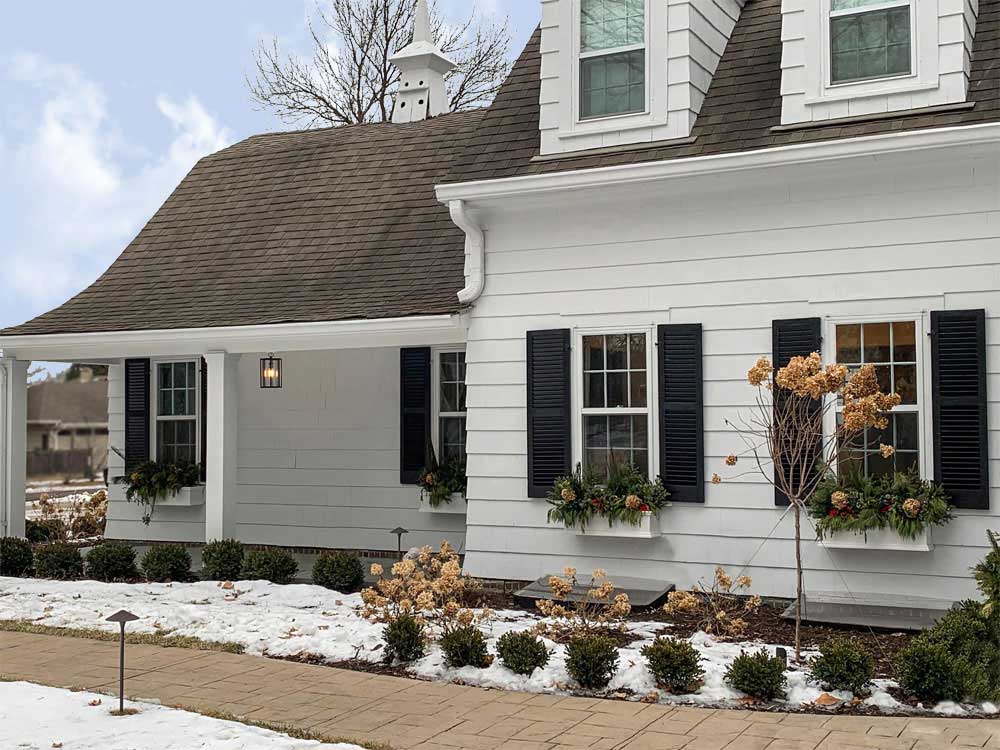Compare Exterior Shutter Materials
| Construction | |||
| Strength & Durability | |||
| Weather Resistance | |||
| Weight | |||
| Appearance | |||
| Finishes | |||
| Installation | |||
| Maintenance | |||
| Cost (ranking 1-6) | |||
| Production Time | |||
| Lifespan | |||
| Best Use | |||
| Styles | |||
| Arch Top Option | |||
The simple lines of farmhouse shutters are the finishing touch required for new construction or a historical renovation. Bold dark accent colors complement the softer hues of both siding and trim. Wood farmhouse shutters welcome visitors from near and far into a home constructed for comfort, warmth, and intimate conversation.

The modern farmhouse concept blends classic features of traditional rural homes with contemporary elements. Houses of the early American farm were hand-built by the landowners strictly for utilitarian purposes. The farmhouse was the central source of rest, replenishment and security focused on the maintenance and management of the land around it.
Construction materials were practical and subject to availability. Rooflines were straight and simple. Clapboard siding was predominantly painted colonial white and windows were strategically placed to efficiently infuse natural light. Porches provided shade and a place to remove muddy boots. Exterior farmhouse shutters managed sunlight, encouraged air circulation, and protected windows from severe weather or uninvited guests.
A majority of exterior farmhouse shutters installed utilized slats, or louvers, to maximize function. Multiple tasks were required of these invaluable window accessories, but they were primarily installed to regulate temperature. Intense summer heat could largely be reduced by closing exterior shutters. East and west panels prevented direct sunlight from entering the home, while slightly opened louvers allowed for air to pass. Window shutters could then fully swing open with hand-forged hinges for maximum access. Wooden shutters remained open with basic shutter dogs that locked the panels in place. Solid wood outdoor shutters added a layer of well-needed insulation to the window for cold winter conditions. Sleet, snow, strong winds, and hail threatened the constitution of primitive glass without the welcomed barrier of exterior window shutters.

As discussed, louvered exterior shutters with a functional design were favored because of their versatility. Yet rustic board and batten shutters were easy to construct and performed many of the required tasks. DIY board and batten shutters were built like barn wood doors. Vertical boards were positioned and secured with horizontal battens. Spaces could be left between the boards for a limited breeze to pass.

The modern farmhouse home has come to adopt the rugged board and batten shutter. The simple straightforward approach perfectly contrasts contemporary features that may have been infused into the overall design. Modern farmhouse shutters rarely require operation, eliminating the need to consider venting, light control, or security. To complete the appearance, installation with authentic exterior shutter hardware is recommended.
Shutter paint colors were restricted in the late-1800s and early 1900s so the available palette was limited. Black shutters were the standard. It is recommended for vintage estates to remain historically accurate. However, modern farmhouses have leniency in the paint color selected for the shutters.
Adaptations of the farmhouse style are many and varied. Many consider the French style the original benchmark, while others champion the American version. Both are beautiful in their own right.
The simple composition of board and batten shutters is easy to simulate. Two or three horizontal battens overlap and are adhered to multiple long vertical boards. Begin to build farmhouse shutters with adequately sized components. Some homeowners attempt to construct rustic board and batten shutters from skimpy 1×8, 1×6, or 1×4 lumber, which in reality only measure about 3/4 inch thick. Verify all boards are straight, and that the combined width equals the desired shutter size.
The use of reclaimed lumber is extremely popular in the building of farmhouse homes. It may be difficult for the average homeowner to mill reclaimed wood to the necessary size and thickness to operate properly, but it could be very cool.
Build DIY house shutters with a width half the width of the window. Unequal boards of various sizes will make the shutters appear unbalanced.
Attach the battens to the face of the boards with stainless steel screws or nails and wood glue. Fill all holes, then prime and paint all surfaces.

Homeowners can purchase and install DIY exterior shutters without the assistance or expense of a contractor or builder. Outdoor shutters are easy to measure for and can be ordered to be made to just the right size. DIY farmhouse shutters are the perfect weekend project to add value to the home.
ShutterLand can supply and advise on the purchase of exterior house shutters. We think about exterior shutters daily and would love to assist finding the right application for your home.